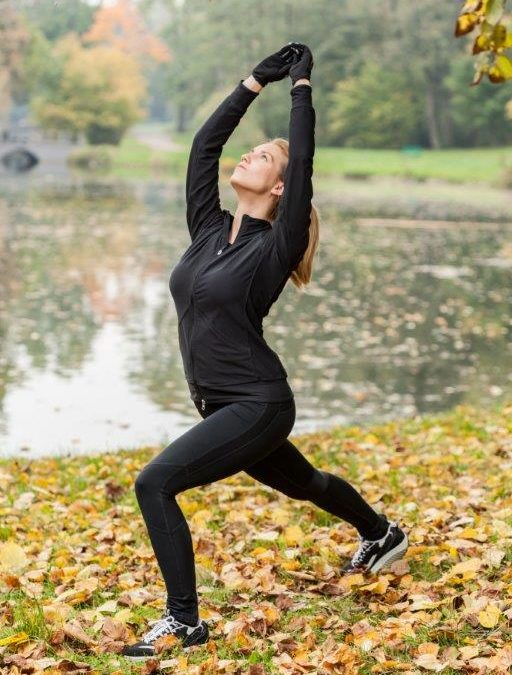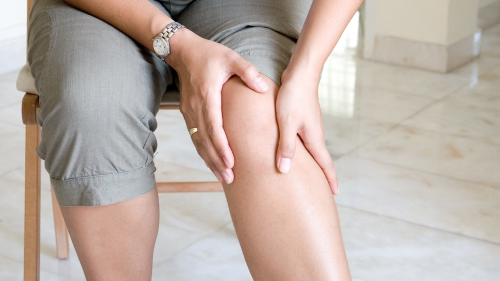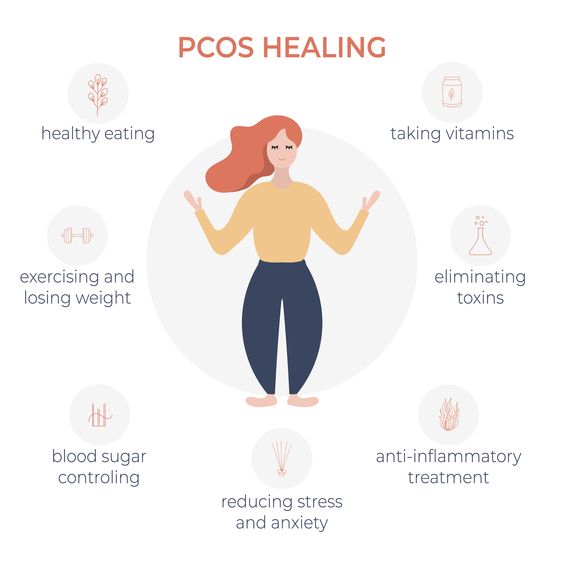Benefits of winter yoga
Cold, dark mornings and winter nights are not particularly conducive to encouraging you to roll out your mat and get to your regular yoga class; however, it is perhaps the single most important decision you could make to support your mind and body as you move through the coldest season of the year.
Yoga for chronic joint pain management in winter
Research consistently highlights that symptoms of chronic joint pain are exacerbated in winter. This is of particular relevance to yoga practitioners who have an existing medically diagnosed condition that further intensifies joint pain in cold weather – such as Crohn’s disease, ulcerative colitis, osteo and rheumatoid arthritis, to name a few.
In general, practising asana (postures) in a Vinyasa (flowing form) style maintains joint mobility and increases circulation while loosening stiffness within the joints. An essential part of easing pain during this time is to ensure that the body stays warm, as heat also helps muscles to relax and, therefore, asana as a therapy is a soothing way of decreasing joint pain.
Cold weather may not necessarily be the only contributing factor to joint pain in winter. The barometric pressure changes during colder weather can also increase joint pain. Barometric pressure is the weight of the atmosphere that surrounds us and this pressure drops just prior to a decrease in weather conditions, which subsequently lowers air pressure. This allows tissues in the joints to expand, increasing pressure and subsequently increasing pain in the joints. In the presence of a high-inflammatory response, a gentle, more restorative therapeutic practice should be favoured in order to increase joint mobility without increasing inflammation.
Yoga and pranayama
for the lungs
One of the most natural ways that asana protects the lower respiratory system is to consistently breath via the nose, through the practice of ujjayi (victorious) pranayama (breathing practices), and this is for two main reasons. Firstly, the lungs constrict when the air coming into the body is cool, and inhaling through the nose warms the air before it enters the lungs, caused by air passing over blood capillaries underneath the mucous membranes. Secondly, the groove-like passage of the turbinates in the nasal airway swirl and filter air, thus protecting the respiratory system from potential allergens that may irritate the lungs. Stronger pranayama practices also benefit the lungs and strengthen the relationship between the nervous and respiratory systems – such as kapalabhati (skull shining breath) and bhastrika (bellows breath) – as they both aim to support, strengthen and protect both the upper and lower respiratory while increasing the tonicity and integrity of lung function and respiration.
The winter yoga glow –
skin renewal
The skin is the largest organ of the body and contributes significantly to the detoxifying process in conjunction with other internal organs, including the liver, bowel, kidneys, lungs, lymph and immune systems. In winter, a combination of central heating, lack of ventilation, low humidity, less atmospheric moisture, cooler air and wind tend to cause the skin to become dry and dehydrated. The benefits of sweating during a strong, heated vinyasa yoga practice is the body’s natural way of cleansing the pores of the skin, maintaining skin hydration while increasing the texture and suppleness of the skin. It also means that as you sweat more, your body has to work harder to cater for these changes and therefore increasing cardiovascular and respiratory function, thus maintaining a healthy body weight that can tend to increase during this time of year.
Seasonal affective disorder – elevate the mood
The pineal gland in the brain produces a hormone called melatonin, responsible for balancing the sleep/wake cycles during seasonal changes and stimulated by darkness, and may lead to a condition known as seasonal affective disorder (SAD). This condition is also known as the winter blues and carries symptoms specific to winter, such as low mood, tiredness not alleviated by rest, need for more sleep, low energy and a significantly increased appetite. SAD has been directly linked with a deficiency of melatonin due to the increased dim light during the winter months. An effective way that yoga may help to alleviate these symptoms is to incorporate the practice of surya namaskar (sun salutations) variations into your morning practice; not only will they build heat and increase cardiorespiratory integrity, they will also elevate the mood, provide a greater feeling of energy and endurance as well as contribute to rebalancing the circadian rhythms.
Yoga, stress and immunity
Research consistently identifies exactly how chronic stress contributes significantly to disease. During times of stress, the hypothalamus (the master gland of the endocrine system) releases a stress hormone known as cortisol, responsible for both alerting the body during stressful situations and regulating the immune system. High levels of cortisol present in the blood over a prolonged period of time suppress the immune system, thereby compromising the body’s natural ability to ward off disease.
Although a strong, heated vinyasa practice is an essential part of the limbering process and a crucial part of working synergistically with the systems of the body during winter, it is also important to recognise that the slower, more relaxing aspect of yoga supports immunity, particularly where high levels of stress are a factor in day-to-day life. When the nervous system is relaxed, the immune system has a greater chance of attacking bacteria and viruses.
Yoga postures, such as forward bends and inversions, practised in a supported and relaxed way aim to relax the nervous system through the parasympathetic nervous system (rest, relax, digest) and boost the body’s innate ability to heal itself through the immune response.
Conversely, heated back bends such as setu bandha sarvangasana (supported bridge pose), bhujangasana (cobra pose), urdhva dhanurasana (upward bow pose) and salabhasana (locust pose) all aim to compress the thymus gland, an essential part of the endocrine system that produces T-lymphocytes (white blood cells) – an integral part of immune defence.
The spleen is also activated during asana practice; it is located in the upper left part of the abdomen, between the stomach and the diaphragm, and its main function is to filter red blood cells and fight off infection. Almost all asana massage the spleen in some way; purely because of its location, however, spine twists (left side), forward bends, lateral flexion (left side), back bends and inversions have a therapeutic action, thus increasing blood supply to the spleen as well as increasing its overall function.
It is evident here that a balance between a strong, heating asana practice followed by a gentle, more restorative closing sequence incorporating pranayama practices ensures integrity of the systems of the body, working synergistically during winter. Nothing will ever replace our own inner barometer of health, and through the practice of yoga – as our awareness of this ever-changing, ever-evolving body deepens – we can become empowered to make the lifestyle and nutritional changes and commitment to our practice and provide the body the space to heal itself and maintain health – because, after all, yoga practice is one of the best preventative medicines you could ask for. 




